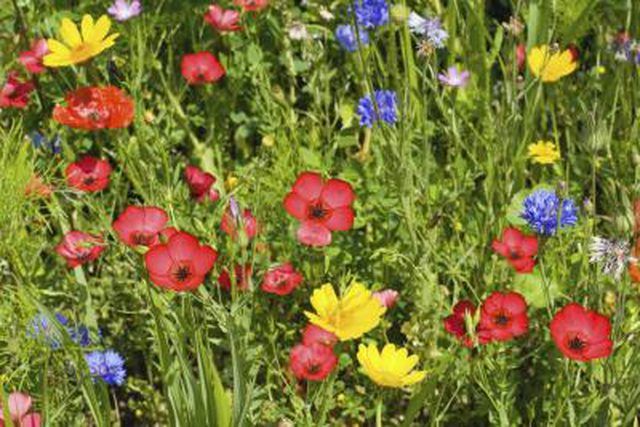Bulbs
Flower Basics
Flower Beds & Specialty Gardens
Flower Garden
Garden Furniture
Garden Gnomes
Garden Seeds
Garden Sheds
Garden Statues
Garden Tools & Supplies
Gardening Basics
Green & Organic
Groundcovers & Vines
Growing Annuals
Growing Basil
Growing Beans
Growing Berries
Growing Blueberries
Growing Cactus
Growing Corn
Growing Cotton
Growing Edibles
Growing Flowers
Growing Garlic
Growing Grapes
Growing Grass
Growing Herbs
Growing Jasmine
Growing Mint
Growing Mushrooms
Orchids
Growing Peanuts
Growing Perennials
Growing Plants
Growing Rosemary
Growing Roses
Growing Strawberries
Growing Sunflowers
Growing Thyme
Growing Tomatoes
Growing Tulips
Growing Vegetables
Herb Basics
Herb Garden
Indoor Growing
Landscaping Basics
Landscaping Patios
Landscaping Plants
Landscaping Shrubs
Landscaping Trees
Landscaping Walks & Pathways
Lawn Basics
Lawn Maintenance
Lawn Mowers
Lawn Ornaments
Lawn Planting
Lawn Tools
Outdoor Growing
Overall Landscape Planning
Pests, Weeds & Problems
Plant Basics
Rock Garden
Rose Garden
Shrubs
Soil
Specialty Gardens
Trees
Vegetable Garden
Yard Maintenance
How to Grow Cornflower
How to Grow Cornflower. Whether you call it a bachelor’s button or a cornflower (Centaurea cyanus), growing this annual cutie is a snap. The small blue flowers of the species add a distinctive color to the landscape during the spring and summer blooming period and charm to fresh and dried flower arrangements. You'll also find cornflower...

Whether you call it a bachelor’s button or a cornflower (Centaurea cyanus), growing this annual cutie is a snap. The small blue flowers of the species add a distinctive color to the landscape during the spring and summer blooming period and charm to fresh and dried flower arrangements. You'll also find cornflower cultivars in other colors, from white to pink and lavender. Cornflowers grow 1 to 3 feet in height, depending on cultivar.
Things You'll Need
Plug tray
Seed starting mix
Plastic wrap
Heat mat
Compost
Rake
10-10-10 fertilizer
Pruning shears or scissors
Household bleach
Fungicidal soap spray
Start cornflower seeds either outdoors, after the last frost date in your area, or indoors, one month before the last frost date, in plug trays of moist seed starting mix – one to two seeds per plug, covered with ? inch of the mix. Cover the tray with plastic wrap to ensure high humidity and place it on a heat mat set to 75 degrees Fahrenheit. The seeds should germinate within seven to 10 days. Remove the plastic wrap when they sprout.
Move the seedlings off the heat mat and into an area that receives indirect sunlight after germination. Keep the mix moist at all times. Transplant the cornflower seedlings into the garden when they have their third set of leaves.
Choose a spot in the garden that receives full sun or, if summers are scorchers where you live, choose a spot that is shady in the afternoon. Dig a 1- to 2-inch layer of compost into the garden soil and rake the bed until it’s level.
Dig planting holes that are to the depth that the cornflowers are currently growing and 12 inches apart. Remove the seedlings from the plug tray, saving the strongest and discarding the weakest, and place the root balls in the holes. Cover the roots with soil and use your hands to firm it carefully around the base of each seedling.
Water the seedlings slowly to the depth of their roots and water again whenever the soil is dry to a depth of 6 inches. Avoid watering too often because the cornflower’s stem will become weak and floppy. Unless conditions are hot and dry, continue watering weekly.
Fertilize cornflowers once a month while they are in bloom. Use a balanced fertilizer, such as 10-10-10, at a rate of 1 cup per 25 square feet of garden space. Sprinkle the fertilizer on the soil around the cornflowers and water to a depth of 6 inches.
Snip dead flowers from the cornflower plants to force them to keep blooming. Use clean pruning shears or scissors to snip the stem off at its base.
Inspect the cornflower periodically for aphids – small green or white pests that suck the juices from the plant. Use a strong spray of water from the hose to wash then off the cornflower.
Check the plant for rust and powdery mildew during periods of wet weather. Rust symptoms appear as small orange or yellow blisters on any green part of the cornflower; powdery mildew appears as a white, talc-like substance, typically on the succulent parts of the plant. Avoid these diseases by watering the cornflower at the soil and not overhead and allowing proper air circulation through proper spacing. Remove infected parts of the plant and dispose of them. Spray the cornflower with a ready-to-use fungicidal soap spray. Ensure that all parts of the cornflower plant are covered with the spray and repeat every 10 days, or according to fungicide's label.
Tips & Warnings
Disinfect the pruning shears or scissors in a solution of one part of household bleach and nine parts of water. Allow the pruning shears to dry before using.
If planting full-grown transplants, plant at the same level the cornflowers were growing in the their container and space 12 inches apart.
Cornflowers grow well inside containers with drain holes and planted in a lightweight planting medium.
Mountain bluet (Centaurea montana) is a perennial cornflower that produces blue flowers with margins that are fringed. Growing up to 24 inches in height an blooming in early summer, it's hardy in U.S. Department of Agriculture plant hardiness zones 3 through 8.